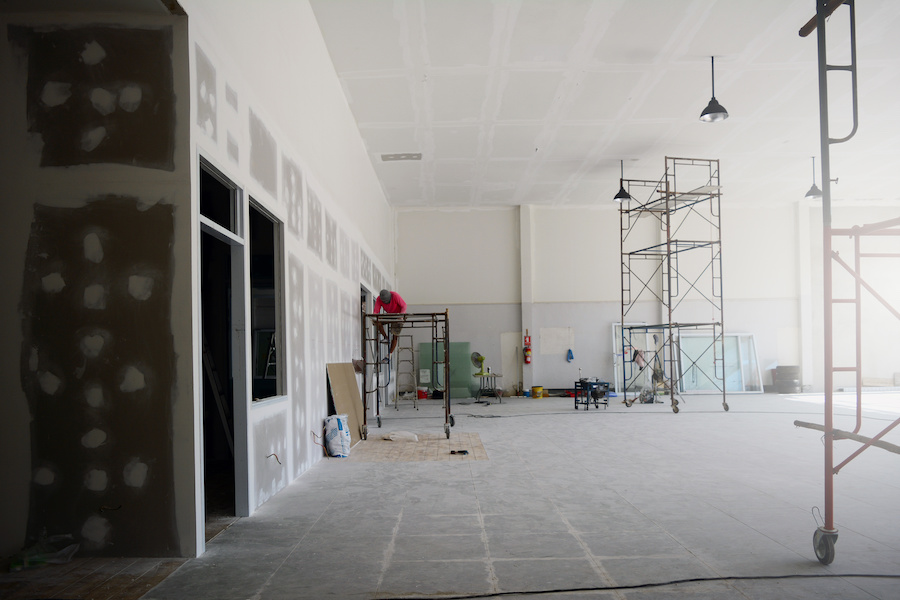If you’re leasing new space, many clauses can force your company to pay through the nose.
One of the most critical points of negotiating a new lease is the work letter which states the necessary build-outs to be completed, the allowance your landlord will provide to pay for the renovations, and any other expectations throughout the process.
As tenant reps, we work closely with leases every day and have seen how tenants can get taken advantage of when defining the terms of their build-outs. We have determined the key questions you should know to ask that will influence the funds you receive from your landlord.
Build-outs are essential to transforming your landlord’s space into an environment that meets your company’s standards for comfort and productivity. So read on to learn what you should be asking to avoid a CRE nightmare, including:
- What is typically expected in a work letter?
- How do market dynamics influence your Tenant Improvement Allowance (TIA)?
- Where does the Tenant Improvement Allowance (TIA) start?
- Who will be conducting the build-outs?
- How can a tenant rep ease the negotiation process?
What are the Basics of the Work Letter?
The work letter is intended to cover any conditions that must be met during the newly leased space build-out process. The build-out clause is highly extensive and can often appear as its own document in addition to the lease. At a bare minimum, it should cover:
- The plans and expectations of the tenant
- Timelines for the build-out (including plans, approval dates, and construction schedule)
- Construction work by the landlord (and possibly the tenant)
- Contractors conducting the work
- Cost of the build-out
- Expected form and timeline of payments
- Work acceptance, possession, and occupancy
Failure to properly outline the requirements of a work letter is a critical error on behalf of the tenant. You could fall into innumerable pitfalls within this clause that could cost your company. That is why due diligence is necessary when negotiating leases, specifically within the work letter.

The work letter is a significant point of negotiation. For instance, if the landlord’s tenant improvement allowance (TIA) does not cover all the work you need, the landlord will typically be willing to amortize the additional funds that you require as additional rent. Therefore, it may affect the occupancy cost for the entirety of the lease. This emphasizes how important it is to work with a professional like a tenant rep.
A great tenant rep knows that they have to thoroughly analyze not just base rent, but all the factors that influence the total occupancy cost. This includes negotiated escalations, offers for tenant improvement allowance, and many other factors that contribute to the total cost of occupancy (TCO). They know how to leverage negotiation points to secure the most attractive deal for their clients.
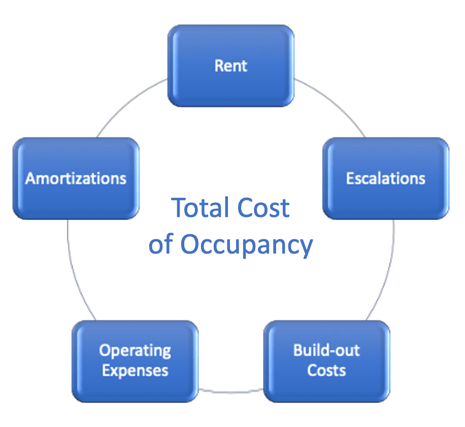
How Does Supply and Demand Influence the Work Letter?
Many factors determine the amount of money the landlord will contribute to the build-out in the tenant improvement allowance. Like many other lease clauses, the landlord’s willingness to devote funds will be influenced by the market dynamics. It all comes down to supply and demand.
In periods of low demand for space, your landlord may be more likely to offer a more considerable tenant improvement allowance to incentivize you to lease their space. Why? Build-outs increase the value of their property, making it more marketable. So even after you leave, they still benefit from the improvements you contributed to their space. They are able to ask the next tenant for a higher base rent since the property was previously renovated.
How is the Tenant Improvement Allowance Determined?
The state of the building will play a significant role in determining your TIA. Second-generation space that another tenant previously inhabited will require far less work. The major ductwork, ceiling, outer walls, etc., will already be in place.
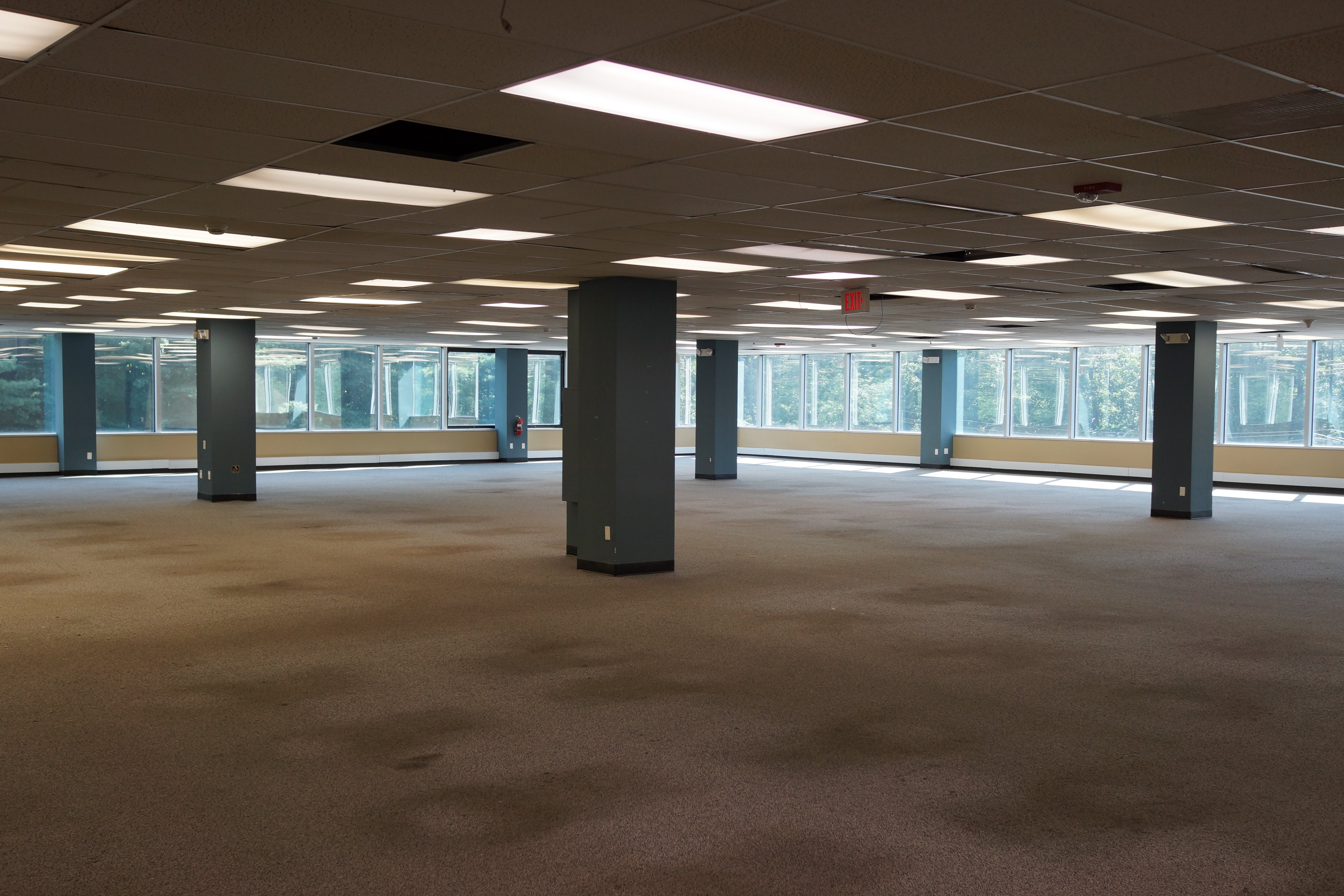
On the other hand, if you are moving into mostly unfinished, virgin space- your building will likely be presented in a cold dark shell condition. While the exact fixtures will vary from building to building, shell space denotes that construction has been completed but there are few fixtures, if any.
Depending on the property, the shell state will vary. Some require far more work than others before a tenant can move in comfortably.
Cold Dark Shell
A cold dark shell is effectively the building’s skeleton state. It is also the barest condition a building can be presented in. No HVAC, no lights, no ceiling, no flooring. It’s just the:
- Four walls
- A roof
- Unfinished flooring
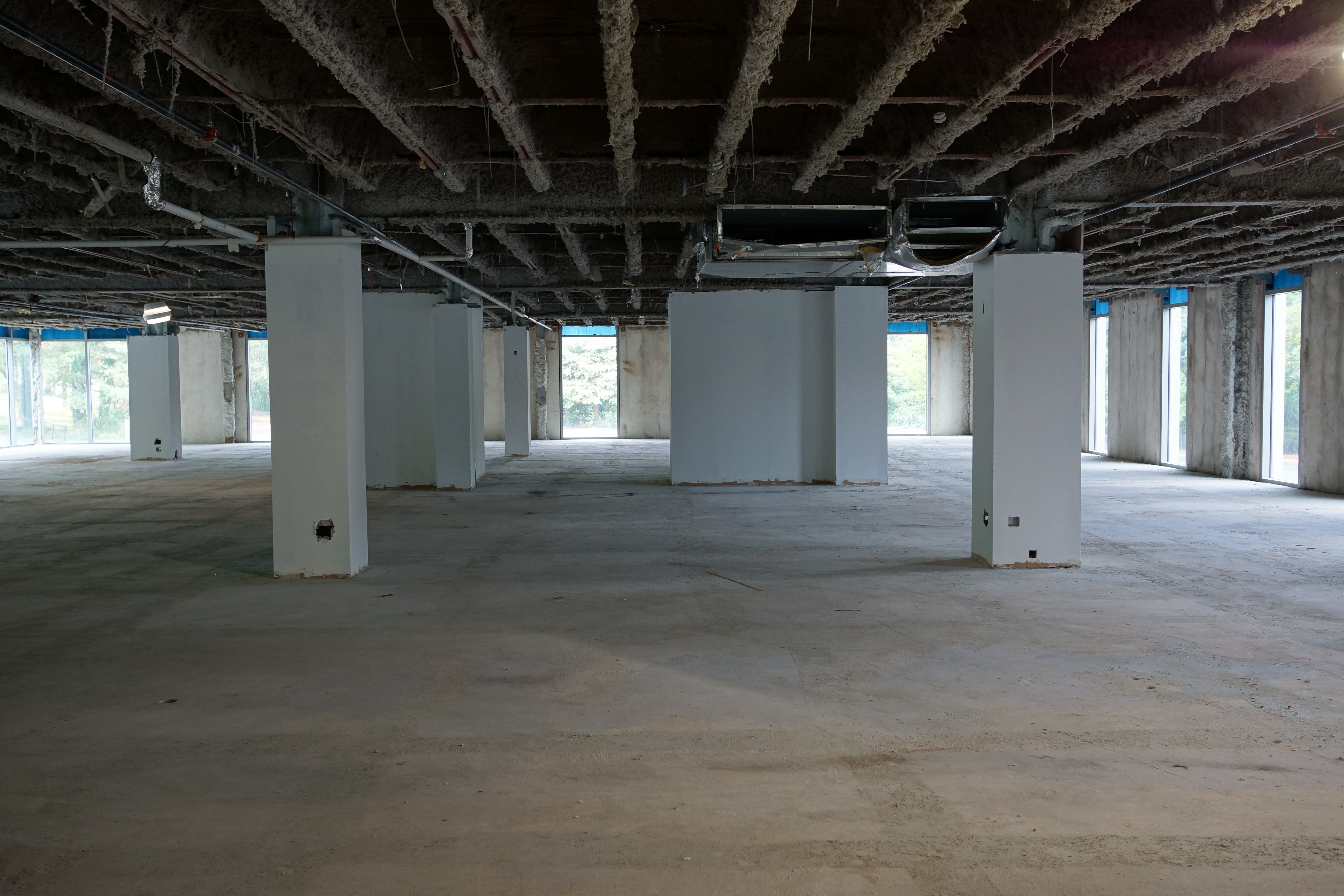
With cold dark shells, the tenant has a lot of flexibility to develop the creative direction they want to take the space. However, the process will likely be more expensive. Therefore, they are typically inhabited when a tenant buys the whole building, and/or, the building is being built specifically for that tenant.
Typically, you can negotiate a larger tenant improvement allowance if the space you plan to lease is in a cold dark shell condition. Think about it from the landlord’s perspective. They want to have marketable space. They can likely get more rent dollars for fully furnished, turn-key properties. So, the landlord benefits if an initial tenant is willing to renovate the space because they may be partially paying to get the building in presentable order.
Know that landlords are smart. If the building is in bare condition and you are offered a large sum of TI dollars, most of the funds will be devoted to getting their property in working order. Construction costs may eat away at your TI offer while the landlord benefits because the space is more habitable when you leave.
For example, let’s say that your landlord gives you $70/square foot to conduct renovations. While you may think you’re initially getting a deal, $30 of those $70 will go to the basic infrastructure of the space. Then you are left with only $40/square foot for any remaining alterations you wish to make to the space. You have far less financial freedom than you previously believed to adjust the property to your company's needs.
You may be forced to then reach into your budget to conclude the necessary renovations.
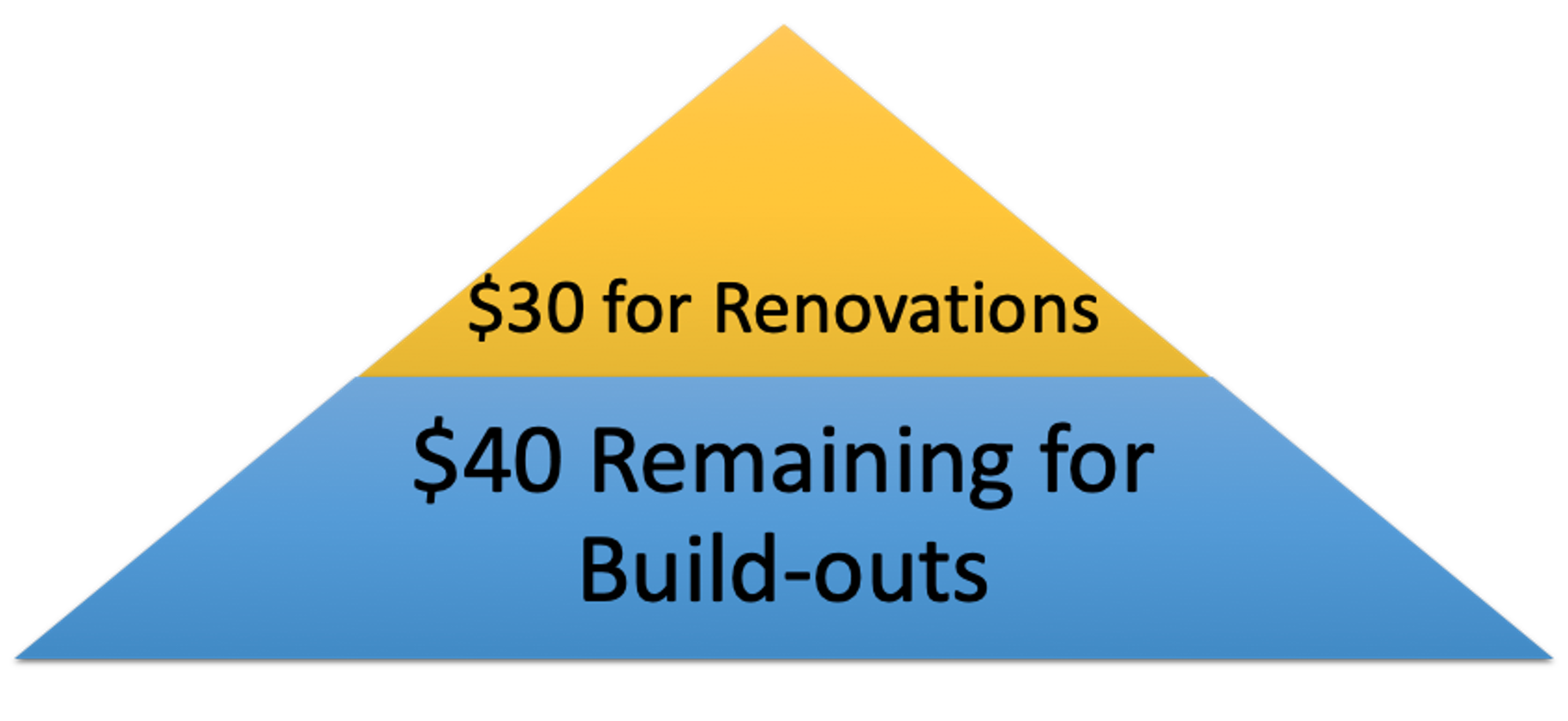
Who Will Conduct the Build-Outs?
Landlords will typically want their contractors to complete any build-outs. This doesn’t mean that you can’t work with your contractor or architect but know that your landlord will have their endorsed construction professional.
Massive landlords will have construction departments with engineers and contractors. If not in-house, they will likely have a third party, preferred contractor they work with on build-outs.
If you blindly accept the cost estimate of the landlord’s contractor, know that you may be taken advantage of. Some due diligence is required on your behalf to ensure that the bid you receive is actually the cost of the build-outs.
On some occasions, the contractor will charge fees that exceed the actual cost of the renovations. The profit then can be kept by the contractor or possibly split with the landlord. Or, the contractor will estimate their bid lower than the actual cost required to renovate the building. As a result, the landlord will offer fewer TI dollars, and you will be forced to cover the difference.
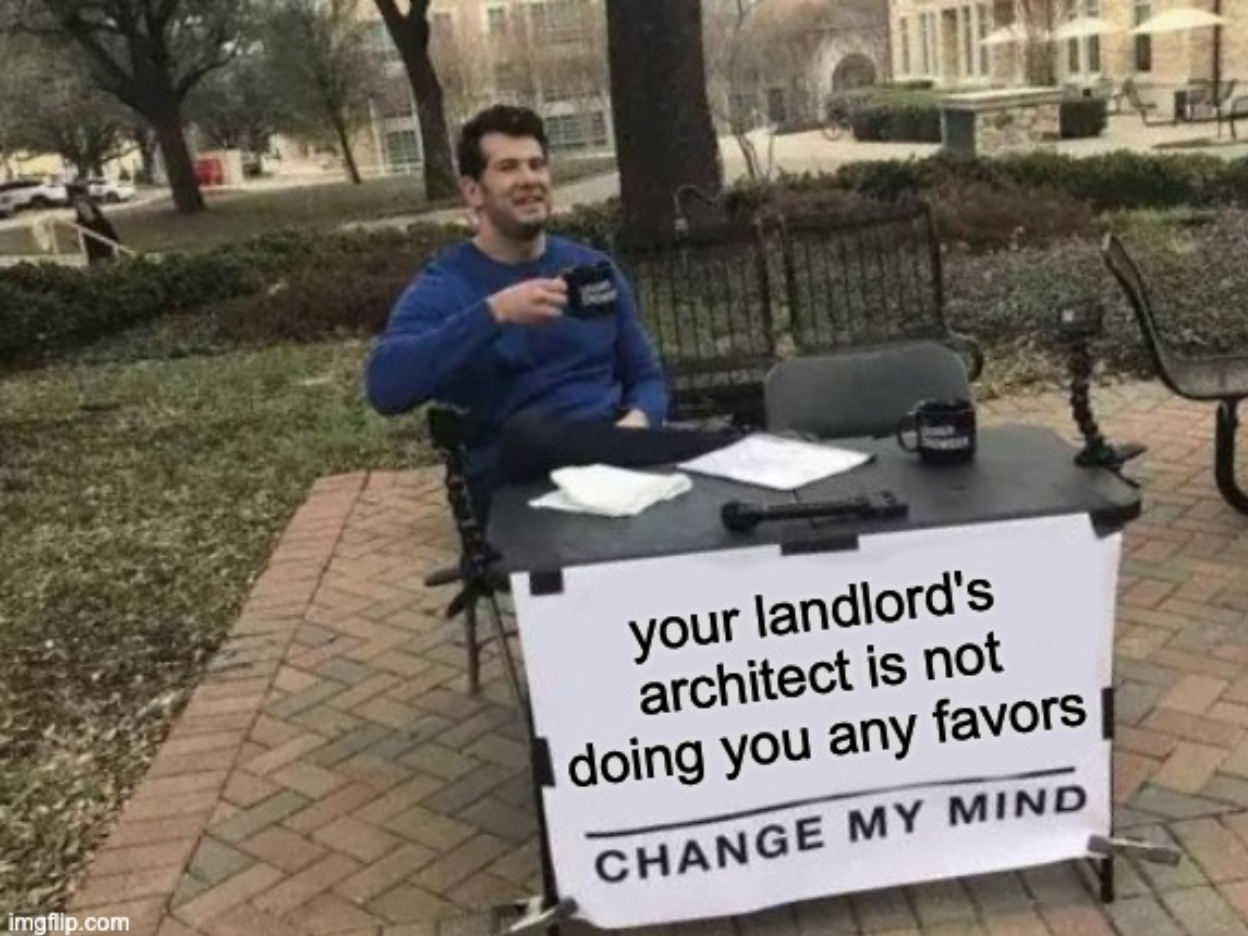
This is why it is so important to have a clear outline of the expected costs. When negotiating the work letter, it is fundamental to come equipped with office or warehouse construction knowledge. If not, it is time to put someone with that knowledge on your team.
How a Tenant Rep Will Help You Negotiate Your Work Letter
As you can see, there are many factors to be aware of when solidifying the terms of your work letter. They discussed questions are only a jumping-off point. There are far more places where you can get potentially taken advantage of as a tenant.
Luckily, if you work with a real estate professional like a tenant rep, you don’t need to worry about that happening. Tenant reps are experts at negotiating with landlords to secure their clients the most optimal terms and prices for their CRE properties.
They know what to look for, and what could have been left out in the details of not only your work letter, but your entire lease.
Check out this article to learn more about why you shouldn't negotiate your lease without a tenant rep.
